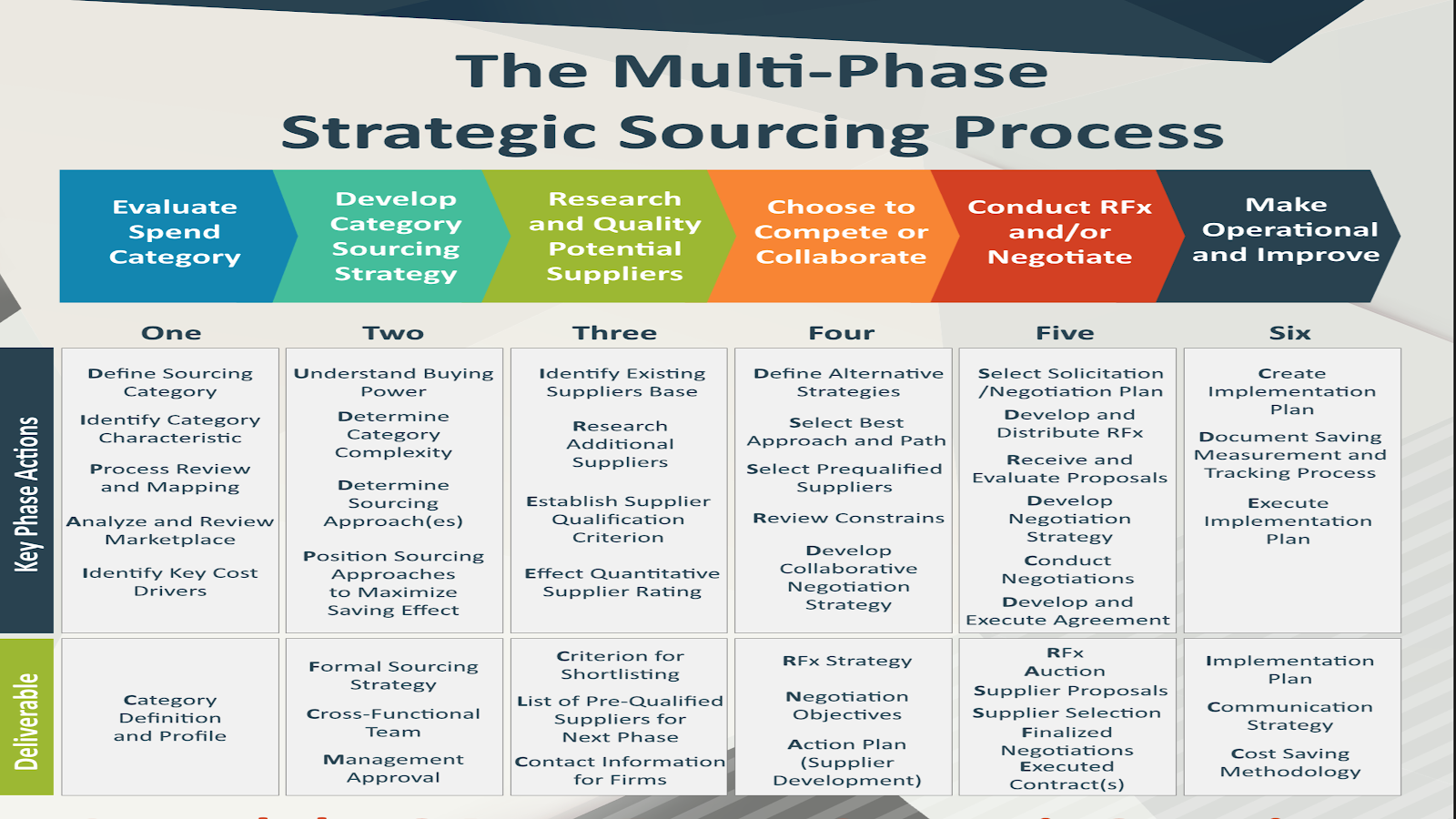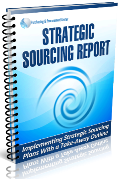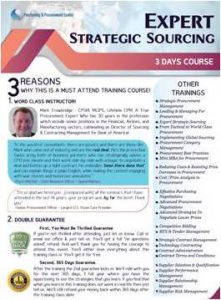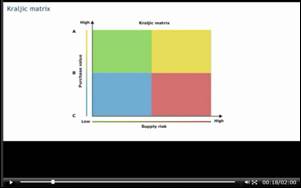The Definition Of Sourcing (And It's Many Vital Processes)
Sourcing can be defined as the strategic process of finding the right partners and resources that you need to run your organization. Today, sourcing requires a lot of smart decision making to maintain balance between cost, quality, and innovation.
Although if we dive deeper, there are two major sourcing definitions:
- Strategic sourcing
- Global sourcing
But what exactly do these sourcing elements entail, and why is it so essential to get it right?
In this guide, we’ll unravel the complete definition of sourcing, it's two major types, and what they both include.
Check Out: How to Implement a Strategic Sourcing Plan with an Example of a Step-by-Step Outline!
What is Sourcing?
Sourcing is more than just finding suppliers or materials; it's the strategic art of identifying, evaluating, and securing the best possible resources to meet your organization's needs.
Imagine it as the backbone of your business operations, where every decision made has a ripple effect on cost efficiency, quality control, and even brand reputation.
At its core, sourcing is about building relationships, not just transactions. It's the delicate balance between cost and value, short-term gains and long-term partnerships.
In today's competitive landscape, sourcing isn't just a function—it's a dynamic process that shapes the very fabric of how a business thrives in the global market.
Definition of Sourcing I – Strategic Sourcing

The first sourcing definition (i.e. strategic sourcing) is a concept that was
popularized by major consultancy companies in the late 1980’s 1990’s
and is now considered a standard purchasing strategy used by many blue chip
companies.
However, the most popular definition of sourcing is strategic sourcing. This is the process of taking advantage of purchasing opportunities by continually reviewing current needs against purchasing opportunities.
Strategic sourcing was first established by General Motors in the 1980’s and is now a common business purchasing tool. The rise of China and its manufacturing capabilities has opened up numerous strategic purchasing opportunities.
Strategic sourcing is often used for high valued services, ad hoc purchases and core large values purchases. There are several processes within the strategic sourcing process and these are:
- Evaluation of the company’s current purchasing cycles.
- Evaluation of what is currently available in the supply market.
- A review of the cost benefit analysis of using other suppliers.
- A review of potential vendors.
- An update of the current procurement strategy.
- Negotiations with potential vendors to ensure that they meet the new procurement strategy and cost benefit analysis.
- Implementation of the new vendor relationship.
- On a continuous process, review and update the strategic sourcing.
Read More: Strategic Services Sourcing – Some Do’s and Don’ts
Definition of Sourcing II - Global Sourcing

The second sourcing definition (i.e. global sourcing) is sourcing products and (sometimes services) irrespective of national boundaries. It is particularly popular within the EEC countries in Europe and Asia. Both of these areas are less concerned with geographic boundaries.
The rise of Chinese and Indian manufacturing capabilities has meant that sourcing from these countries has greatly increased in the past few years. Purchasing companies are seeking low labor and production costs which are not countered by high delivery costs. Many improving countries also offer attractive tax and tariffs to encourage purchasing from them.
Another definition of sourcing is that of sourcing personnel. This is use of proactive searching for potentially highly skilled members of staff that may provide your company with a competitive advantage. Sourcing of staff is also a complex procedure and is used when numerous part time or short term staff are required.
The most common definition of sourcing is the process of identifying potential vendors, conducting negotiations with then, and then agreeing supply contracts with these vendors.
Read More: The Global Sourcing Manager: 5 Key Elements of Success

Other Types of Sourcing
Here are some of the other types of sourcing:
1. Single Sourcing:
Relying on one supplier for a particular product or service. This approach can lead to strong supplier relationships and better pricing, but it also carries the risk of supply disruptions.
2. Multiple Sourcing:
Involves procuring the same product or service from multiple suppliers. This strategy reduces risk and increases competition among suppliers, which can drive down costs and improve quality.
3. Local Sourcing:
Focusing on suppliers within a specific geographic area, often to support local economies, reduce transportation costs, and shorten lead times. This approach can also align with sustainability goals.
4. Outsourcing:
Contracting out a business process or service to an external supplier, often in another country, to reduce costs or access specialized expertise. Common in IT, manufacturing, and customer service.
5. In-sourcing:
Bringing previously outsourced activities back in-house, either to regain control, improve quality, or respond to changes in cost structures or business priorities.
6. E-Sourcing:
Utilizing digital platforms and technologies to conduct the sourcing process, including supplier discovery, bidding, and contract management. E-sourcing increases efficiency and transparency.
7. Sustainable Sourcing:
Prioritizing suppliers that adhere to environmental and social responsibility standards. This type of sourcing reflects a commitment to sustainability and ethical practices.
8. Tactical Sourcing:
Focused on short-term needs, tactical sourcing often involves finding quick solutions to immediate supply requirements, sometimes at the expense of long-term strategy.
Become a Specialized Sourcing Manager!
In a world where business success hinges on the efficiency and reliability of your supply chain, understanding the true definition of sourcing is non-negotiable.
Now, it's not just about choosing the right suppliers, it’s about building relationships that drive innovation, quality, and sustainable growth.
Interested in becoming a specialized sourcing manager? Check out this training on Supplier Selection, Evaluation, and Performance Management that has a 97% satisfaction rate among procurement professionals!
Q1. How does sourcing differ from procurement and purchasing?
Q1. How does sourcing differ from procurement and purchasing?
Sourcing is often confused with procurement and purchasing, but it plays a distinct role in identifying and securing the best suppliers and resources before procurement and purchasing come into play.
Q2. What are the risks involved in sourcing, and how can they be mitigated?
Q2. What are the risks involved in sourcing, and how can they be mitigated?
Q3. How can sourcing contribute to a company’s overall competitive advantage?
Q3. How can sourcing contribute to a company’s overall competitive advantage?
Sourcing can help uncover how a well-executed sourcing strategy can enhance your company’s market position, reduce costs, and improve product quality.
Written by Lindsay Chesar (Education Director), Edited by Artin Viqari (CEO Purchasing & Procurement Center), Updated by Azmi Anees
Return from Definition Of Sourcing to Purchasing Strategic Sourcing Strategies
Return to Purchasing Procurement Center Homepage
Strategic Sourcing
Strategic Sourcing Report
Video-on-Demand
Spend Analysis Video Presentation
Click Here For Access To Video
Training Program
Free Webinar
Special Free E-Learning Sample
Click Here To Get Access To This Sample







